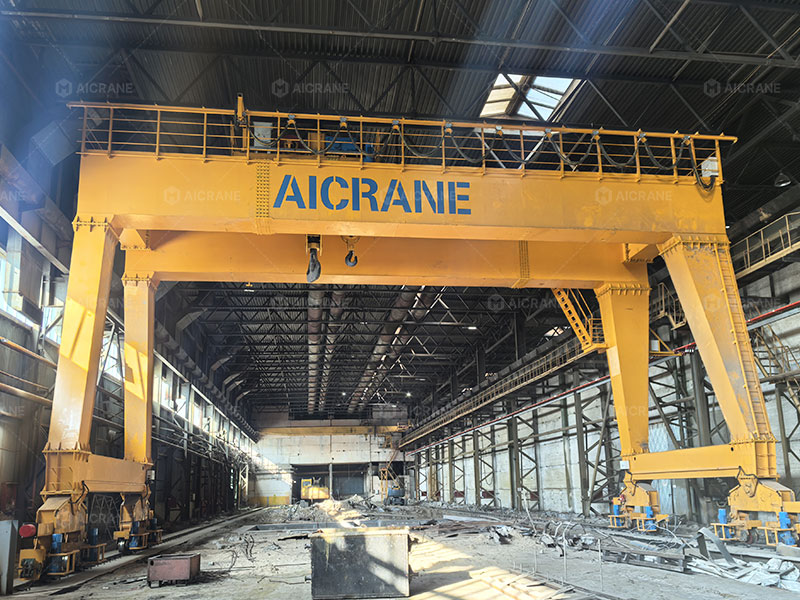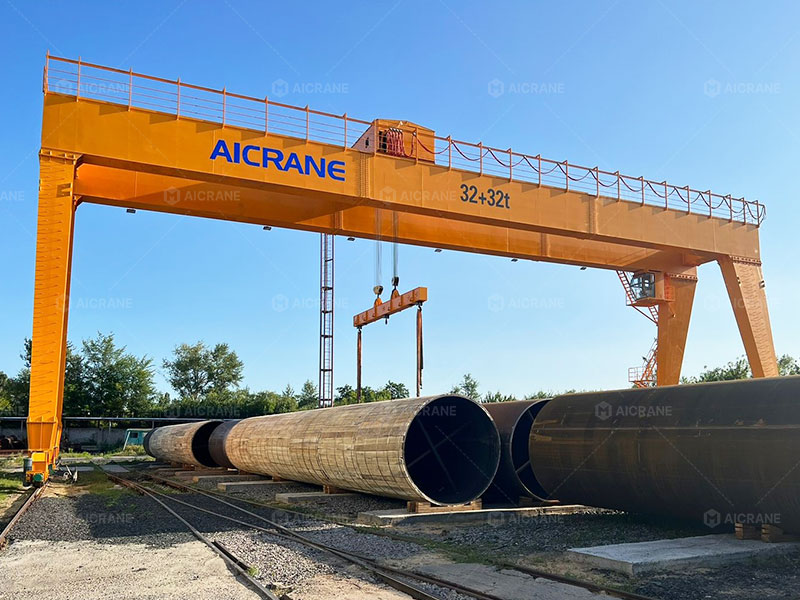Large heavy duty gantry cranes are indispensable machines in industries such as shipbuilding, steel production, power generation, precast concrete manufacturing, and large-scale logistics terminals. Their ability to lift, transport, and position extremely heavy loads with precision makes them central to operations where productivity and safety are paramount. At the core of these cranes’ performance are their motor and drive systems, which determine how smoothly, safely, and efficiently they operate.
This article explores the importance of motor and drive systems in large heavy duty gantry cranes, the types of systems typically used, their technical features, and how they contribute to performance, energy efficiency, and long-term reliability.

The Importance of Motor and Drive Systems
In any gantry crane, motion depends on two main aspects: lifting and traveling. The motor and drive systems are responsible for providing the mechanical energy and control logic for these functions. Their role is not limited to brute force; they also ensure precision, coordination, energy optimization, and safety. For large gantry cranes, which may handle loads from 100 tons up to 500 tons or more, the demands on the motors and drives are particularly high.
A high-quality motor and drive system ensures:
-
Smooth lifting and lowering of extremely heavy loads.
-
Accurate control of crane movements, reducing sway and improving safety.
-
Energy efficiency, lowering operational costs in industries where cranes may run continuously.
-
System reliability, minimizing downtime and costly maintenance.
-
Safety compliance, ensuring overload protection and emergency stop capabilities.
Key Components of Gantry Crane Motor and Drive Systems
The performance of a large gantry crane’s motion system depends on several integrated components:
1. Hoisting Motors and Drives
These power the lifting mechanism and directly influence the crane’s ability to handle heavy loads. Hoisting motors are typically high-torque, low-speed electric motors designed for continuous duty cycles. Variable Frequency Drives (VFDs) are commonly paired with hoist motors to allow:
-
Smooth acceleration and deceleration.
-
Precise speed control.
-
Load-dependent torque adjustment.
-
Energy recovery systems in regenerative braking.

2. Trolley Motors and Drives
The trolley travels along the bridge or girder, carrying the hoist and load. Motors and drives here must offer fine positioning capabilities, especially for large loads that require millimeter-level accuracy in placement. Modern systems often employ synchronized drive control to prevent misalignment and ensure balanced travel.
3. Gantry (Travel) Motors and Drives
These systems control the crane’s movement along the rails or wheels. For large goliath cranes spanning over 30 meters, multi-motor drive systems are often used to ensure even traction and avoid rail misalignment. Advanced control systems synchronize motor speeds, prevent skewing, and reduce wear on wheels and rails.
4. Auxiliary Drives
Large heavy duty gantry cranes may also use auxiliary motors for rotating spreaders, telescopic functions, or specialized attachments. These smaller but crucial drives enhance versatility.
Types of Motors Used in Heavy Duty Gantry Cranes
AC Induction Motors
The most common choice, AC induction motors provide robustness, simplicity, and cost efficiency. When paired with VFDs, they offer excellent speed and torque control suitable for heavy duty cycles.
Squirrel Cage Motors
Widely used for hoisting and traveling motions due to their durability and minimal maintenance requirements.
Wound Rotor Motors
These motors allow adjustable resistance control, which can be beneficial in applications requiring high starting torque. However, they are being increasingly replaced by modern VFD-controlled motors.
Synchronous Motors
In extremely large cranes requiring precise load control and energy efficiency, synchronous motors are sometimes applied, especially in travel mechanisms.
Drive Systems: From Traditional to Advanced
Conventional Control Systems
Earlier cranes relied on contactor-based control and direct-on-line (DOL) starting methods. While simple, these systems caused high inrush currents, abrupt movements, and limited control accuracy.
Variable Frequency Drives (VFDs)
The introduction of VFDs revolutionized crane performance. VFDs provide:
-
Adjustable motor speed.
-
Energy-efficient operation.
-
Smooth starting and stopping, reducing mechanical stress.
-
Integration with anti-sway control systems.
Programmable Logic Controllers (PLCs) and Automation
Modern drive systems often integrate PLCs for automation, synchronization, and safety logic. This allows advanced features such as:
-
Load sway suppression.
-
Automatic positioning and path optimization.
-
Remote diagnostics and predictive maintenance.
Regenerative Drive Technology
Heavy industrial gantry cranes often operate with frequent lowering operations, which produce regenerative energy. Regenerative drives capture this energy and feed it back into the power grid or auxiliary systems, significantly improving energy efficiency.
Performance Factors Influenced by Motor and Drive Systems
1. Load Handling Capacity
Motors with high torque and efficient drives enable cranes to handle heavier loads safely without compromising speed.
2. Speed and Acceleration
Advanced drive systems provide variable speed control, ensuring fast cycle times while maintaining safety during delicate load placement.
3. Energy Consumption
VFDs and regenerative drives can reduce energy consumption by up to 30%, a critical factor for industries aiming to cut costs and carbon emissions.
4. Safety and Precision
Drive systems with feedback loops and control algorithms prevent load sway, detect overloads, and enhance precision in positioning.
5. Maintenance and Reliability
Modern motor and drive systems are designed for durability, often featuring diagnostics that alert operators before failures occur.
Challenges in Motor and Drive Systems for Heavy Duty Cranes
Despite their advantages, these systems face several challenges:
-
Heat management, as large motors generate significant thermal loads.
-
Synchronization, especially in multi-motor travel systems.
-
Environmental conditions, such as dust, humidity, and extreme temperatures.
-
Cost considerations, since high-performance motors and drives represent a significant portion of crane investment.
Trends and Innovations
The future of motor and drive systems for heavy duty gantry cranes lies in smarter, greener, and more integrated technologies:
-
IoT-enabled monitoring for real-time diagnostics and predictive maintenance.
-
AI-assisted motion control to optimize travel routes and minimize energy use.
-
Hybrid and all-electric systems, reducing reliance on hydraulics and fossil fuels.
-
Compact high-efficiency motors, lowering weight while maintaining power.
These advancements not only improve crane performance but also align with global sustainability goals.
Conclusion
The performance of large heavy duty gantry cranes is inseparable from the design and efficiency of their motor and drive systems. From lifting and trolley travel to gantry movement, motors and drives ensure that cranes can handle massive loads safely, smoothly, and efficiently. The adoption of advanced technologies like VFDs, regenerative drives, and smart automation has elevated these machines from simple lifting tools to highly sophisticated systems integral to modern industry.
By investing in robust, efficient, and intelligent motor and drive systems, operators not only maximize productivity but also ensure long-term reliability and safety. As industries push for higher efficiency and sustainability, the evolution of overhead gantry crane motor and drive systems will remain a central driver of progress.